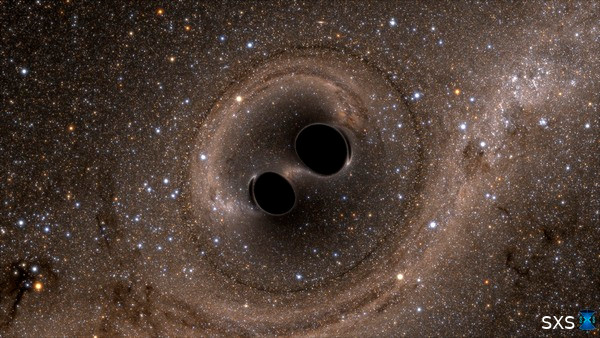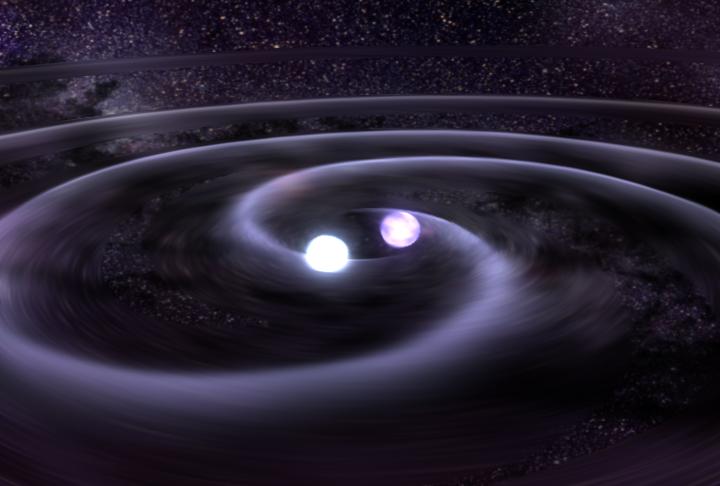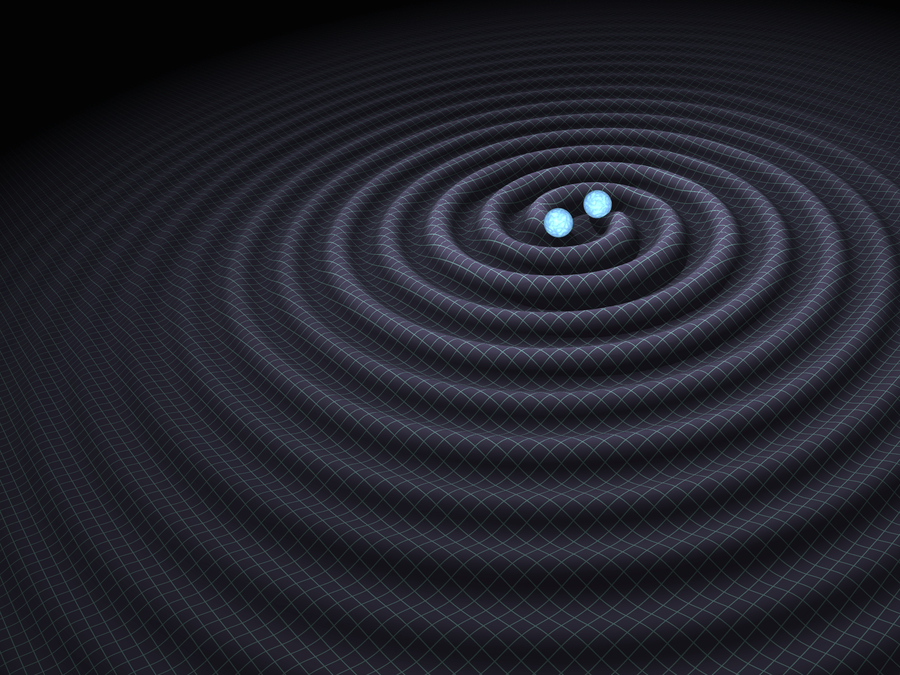
Gravitational Waves
Gravitational waves are tiny ripples in space created by accelerating masses such as the orbit of neutron stars and black holes. As a gravitational wave passes through space it changes the distance between two points. Researchers at Penn State study gravitational waves theoretically as well as observationally through the LIGO and Virgo observatories.
IGC members who study Gravitational Waves
| Name | Role | Affiliation | Phone | Office Address | Affiliated Center(s) | Research Topics(s) | ||
|---|---|---|---|---|---|---|---|---|
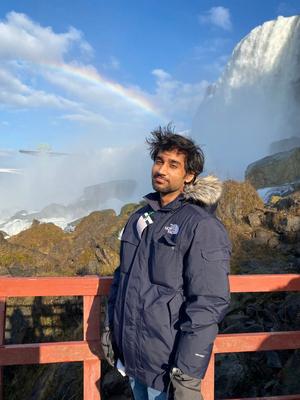 | Shomik Adhicary | Graduate Student | Physics | sva5823@psu.edu | +1 814 865 7533 | 334 Whitmore Laboratory | IGC | Gravitational Waves, Dark Matter, Multimessenger Astrophysics, Black Holes |
| Mark Alaverdian | _ | Physics | mxa895@psu.edu | - | 204 Osmond Laboratory | IGC | Physical Mathematics, Black Holes, Gravitational Waves | |
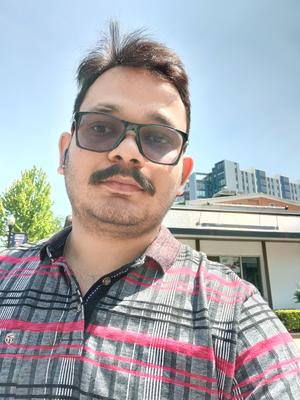 | Harshraj Bandyopadhyay | Graduate Student | Physics | hkb5238@psu.edu | +1 814 865 7533 | 307 Whitmore Laboratory | IGC | Gravitational Waves, Black Holes |
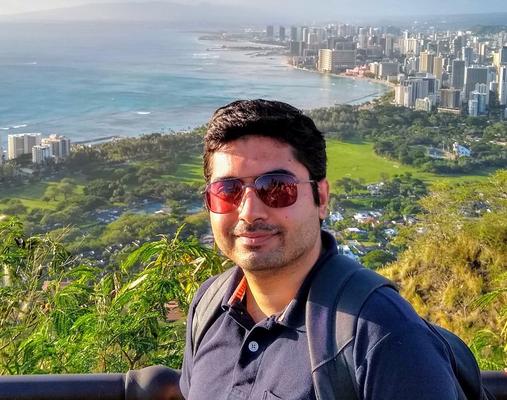 | Mukul Bhattacharya | Postdoc | Astronomy, Physics | mmb5946@psu.edu | -- | 320A Osmond Laboratory | CMA | Multimessenger Astrophysics, Gravitational Waves, Neutrinos, Cosmic Rays |
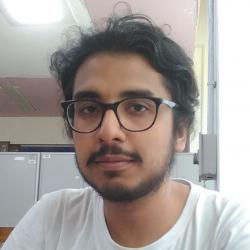 | Maitraya Bhattacharyya | Postdoc | Physics | mbb6217@psu.edu | +1 814 863 9605 | 314 Whitmore Laboratory | CMA | Multimessenger Astrophysics, Gravitational Waves, Black Holes |
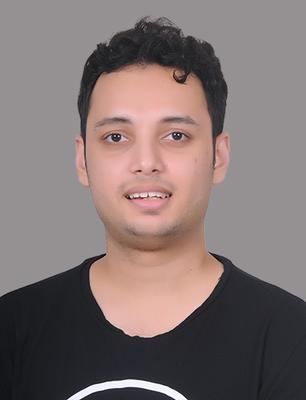 | Koustav Chandra | Postdoc | Astronomy, Physics | kbc5795@psu.edu | -- | 307 Whitmore Laboratory | IGC | Gravitational Waves, Black Holes, Multimessenger Astrophysics |
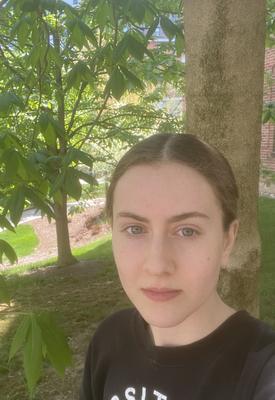 | Aurora Colter | Undergraduate Student | Physics, Math | agc5654@psu.edu | - | - NONE | CFT, IGC | Quantum Universe, Gravitational Waves, Black Holes, Loop Quantum Gravity, Physical Mathematics |
 | Viviana Cáceres | Graduate Student | Physics | vac5288@psu.edu | 7872344444 | 317 Whitmore Laboratory | CMA | Gravitational Waves |
 | Yixuan Dang | Graduate Student | Physics | ykd5167@psu.edu | 8142802592 | 114 Osmond Laboratory | IGC | Gravitational Waves |
 | Abhishek Das | Graduate Student | ICDS, Physics, Astronomy | ajd6518@psu.edu | -- | 321E Thomas Building | IGC, CMA | Cosmic Rays, Black Holes, Neutrinos, Gravitational Waves, Multimessenger Astrophysics, Dark Matter, Quasars |
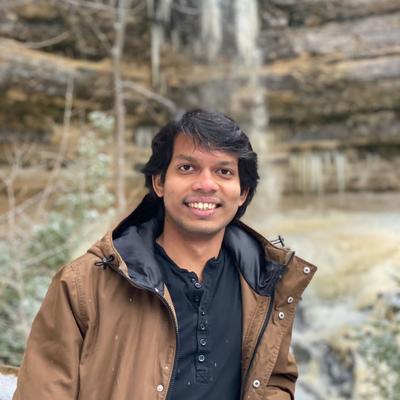 | Arnab Dhani | Graduate Student | Physics | aud371@psu.edu | +1 814 865 7533 | 317 Whitmore Laboratory | IGC | Gravitational Waves, Black Holes |
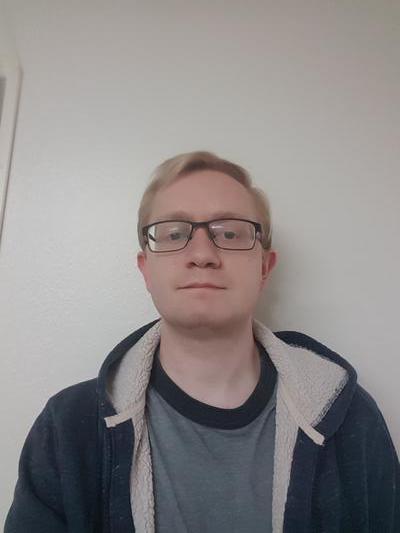 | Jacob Fields | Graduate Student | Physics | jmf6719@psu.edu | -- | 321E Whitmore Laboratory | CMA | Multimessenger Astrophysics, Gravitational Waves, Black Holes |
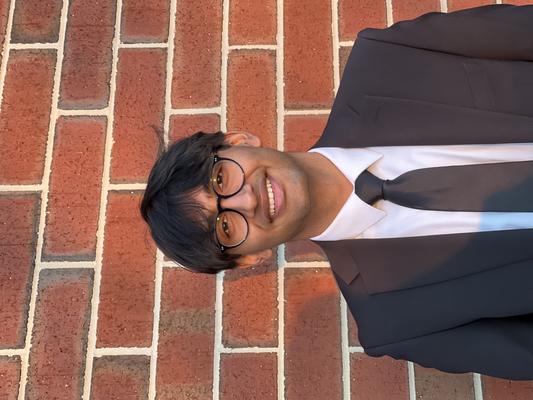 | Joshua Gonsalves | Undergraduate Student | ICDS, Physics | jpg6184@psu.edu | 4847877738 | 334 Whitmore Laboratory | IGC | Gravitational Waves |
 | Ish Gupta | Graduate Student | Physics | ishgupta@psu.edu | +1 814 865 7533 | 317 Whitmore Laboratory | IGC | Multimessenger Astrophysics, Gravitational Waves, Black Holes |
 | Eduardo Gutiérrez | Postdoc | Physics | exg5366@psu.edu | +1 814 863 9605 | 301B Whitmore Laboratory | IGC | Black Holes, Multimessenger Astrophysics, Neutrinos, Gravitational Waves, Cosmic Rays |
 | Peter Hammond | Postdoc | Physics | pph5189@psu.edu | +1 814 863 9605 | 307 Whitmore Laboratory | IGC | Neutrinos, Gravitational Waves, Multimessenger Astrophysics |
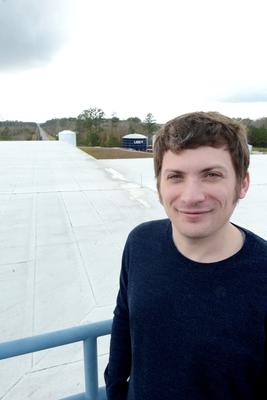 | Chad Hanna | Faculty | Astronomy, ICDS, Physics | crh184@psu.edu | +1 814 865 2924 | 303 Whitmore Laboratory | CMA | Gravitational Waves, Black Holes, Multimessenger Astrophysics, Dark Matter |
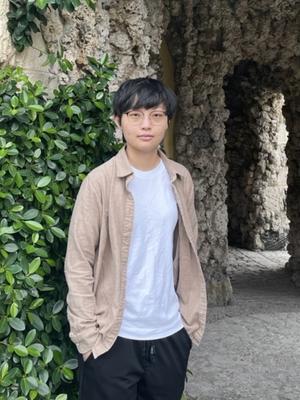 | Yun-Jing Huang | Graduate Student | Physics | yzh5436@psu.edu | -- | 334 Whitmore Laboratory | IGC | Gravitational Waves |
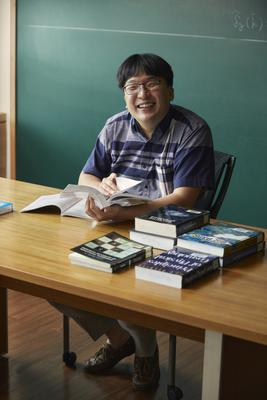 | Donghui Jeong | Faculty | Astronomy | djeong@psu.edu | +1 814 865 1117 | 518 Davey Laboratory | CTOC | Gravitational Waves |
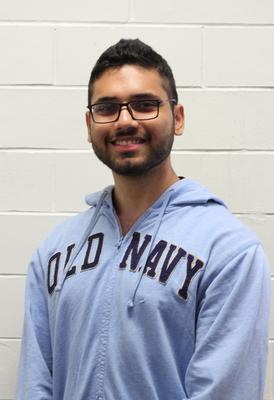 | Prathamesh Joshi | Graduate Student | ICDS, Physics | ppj5075@psu.edu | -- | 301D Whitmore Laboratory | IGC | Gravitational Waves, Multimessenger Astrophysics |
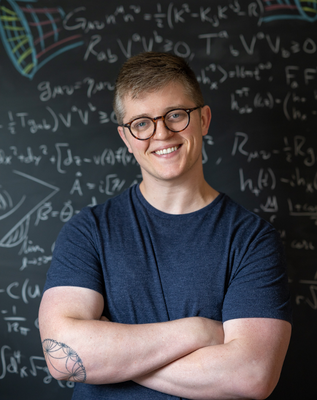 | James Kennington | Graduate Student | Physics | jwkennington@psu.edu | +1 814 865 7533 | Box 66 Whitmore Laboratory | CFT | Gravitational Waves, Dark Matter, Black Holes, Mathematical Structures |
 | Benjamin Lillard | Postdoc | Physics | blillard@psu.edu | N/A | 206B Osmond Laboratory | IGC | Gravitational Waves, Dark Matter, Physical Mathematics |
 | Victor Liu | Graduate Student | Astronomy | vql5180@psu.edu | 6467255201 | 537 Davey Laboratory | IGC | Quasars, Black Holes, Multimessenger Astrophysics, Gravitational Waves |
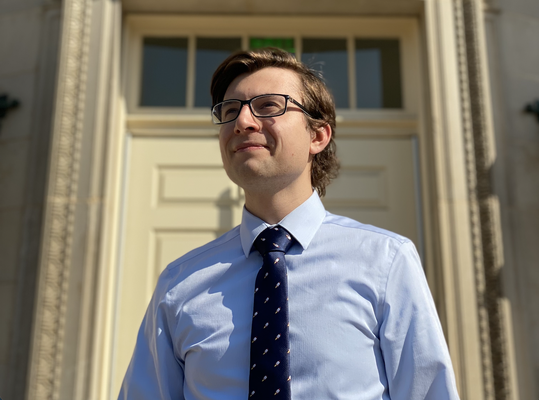 | Gooderham McCormick | Graduate Student | Astronomy | gum66@psu.edu | +1 814 865 0419 | 537 Davey Laboratory | IGC | Gravitational Waves |
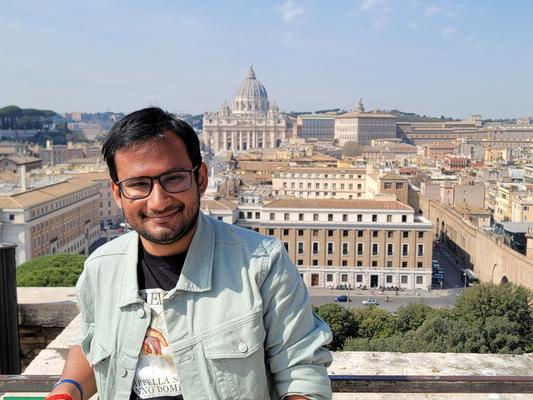 | Mainak Mukhopadhyay | Postdoc | Physics, Astronomy | mkm7190@psu.edu | -- | 320L Osmond Laboratory | CMA | Gravitational Waves, Neutrinos, Multimessenger Astrophysics |
 | Kohta Murase | Faculty | Physics, Astronomy | kum26@psu.edu | +1 814 863 9594 | 321B Osmond Laboratory | CMA | Cosmic Rays, Neutrinos, Multimessenger Astrophysics, Gravitational Waves, Dark Matter |
 | Peter Mészáros | Faculty | Physics, Astronomy | nnp@psu.edu | 814-863-4167 | 504 Davey Laboratory | CMA | Gravitational Waves, Neutrinos, Multimessenger Astrophysics |
 | Pranav Narayanan | Undergraduate Student | Astronomy | psn5080@psu.edu | 9432384214 | None NONE | IGC | Gravitational Waves, Dynamic Universe, Black Holes |
 | Kyle Neumann | Graduate Student | Astronomy | kdn5172@psu.edu | (814) 865-0418 | 537 Davey Laboratory | IGC | Black Holes, Dynamic Universe, Gravitational Waves, Multimessenger Astrophysics |
 | Victoria Niu | Graduate Student | Physics | wmn5062@psu.edu | +1 814 865 7533 | 334 Whitmore Laboratory | IGC | Black Holes, Gravitational Waves, Dark Matter, Multimessenger Astrophysics |
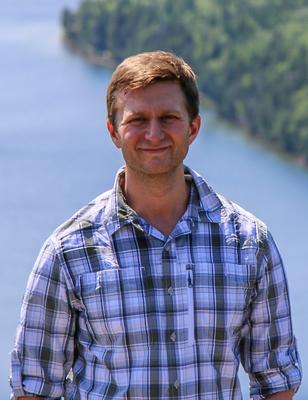 | Alexander Pace | Staff | Physics | aep14@psu.edu | +1 814 865 6995 | 334B Whitmore Laboratory | IGC | Multimessenger Astrophysics, Gravitational Waves |
 | Surendra Padamata | Graduate Student | Physics | ssp5361@psu.edu | -- | 322 Osmond Laboratory | CMA | Multimessenger Astrophysics, Black Holes, Cosmic Rays, Gravitational Waves, Neutrinos |
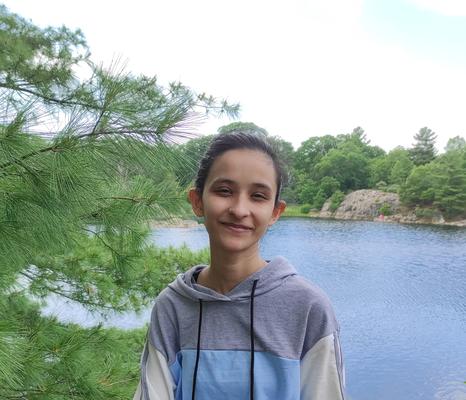 | Shiksha Pandey | Graduate Student | Physics | spp5950@psu.edu | -- | 312 Whitmore Laboratory | IGC | Gravitational Waves, Dark Matter |
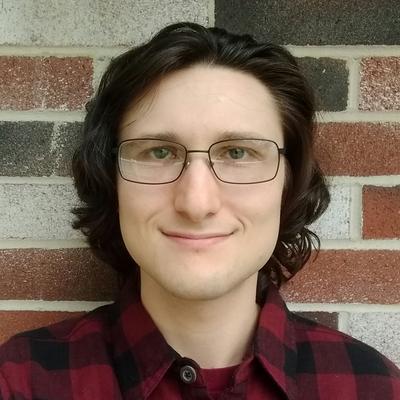 | Cort Posnansky | Graduate Student | Physics | clp5773@psu.edu | +1 814 863 9605 | 334 Whitmore Laboratory | CMA | Black Holes, Multimessenger Astrophysics, Gravitational Waves |
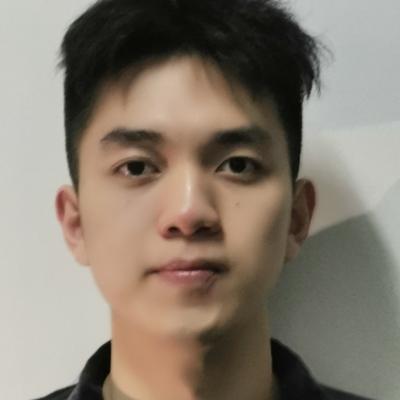 | Yi Qiu | Graduate Student | Physics | yiqiu@psu.edu | 8142328268 | 322 Whitmore Laboratory | IGC | Black Holes, Neutrinos, Gravitational Waves, Multimessenger Astrophysics |
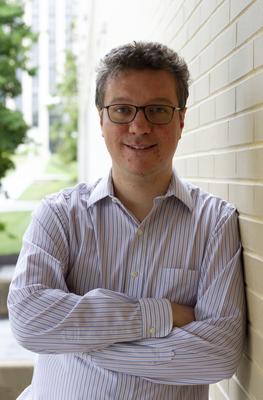 | David Radice | Faculty | Astronomy, Physics | dur566@psu.edu | +1 814 865 7533 | 304 Whitmore Laboratory | CMA | Black Holes, Neutrinos, Multimessenger Astrophysics, Gravitational Waves |
 | Shio Sakon | Graduate Student | Physics, ICDS | sks6461@psu.edu | -- | 321 F Whitmore Laboratory | IGC | Black Holes, Gravitational Waves, Multimessenger Astrophysics |
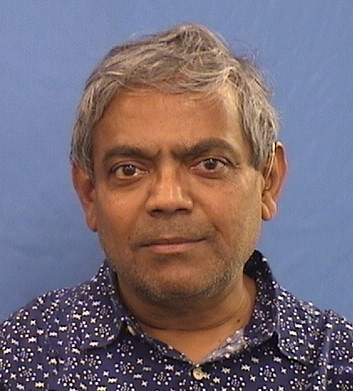 | B.S. Sathyaprakash | Faculty | Physics, Astronomy | bss25@psu.edu | -- | 312 Whitmore Laboratory | CMA, CTOC | Gravitational Waves, Dark Matter, Black Holes, Multimessenger Astrophysics |
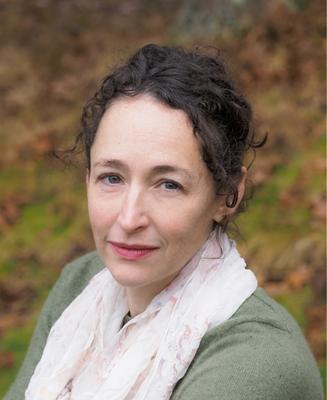 | Sarah Shandera | Faculty | Physics | ses47@psu.edu | +1 814 863 9595 | 303A Whitmore Laboratory | CFT | Cosmic Surveys, Black Holes, Gravitational Waves, Quantum Universe, Dark Matter |
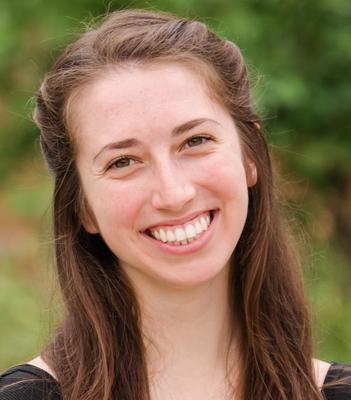 | Kaitlyn Szekerczes | Graduate Student | Astronomy | kas7882@psu.edu | 814-865-0418 | 445A Davey Laboratory | IGC | Gravitational Waves, Multimessenger Astrophysics |
 | Tristan Weaver | Graduate Student | Astronomy | tsw5383@psu.edu | 9494688381 | 115 Davey Laboratory | IGC | Gravitational Waves |
 | Yucun Xie | Graduate Student | Physics | yzx5296@psu.edu | 0000000000 | 114 Osmond Laboratory | IGC | Black Holes, Mathematical Structures, Gravitational Waves |
News about Gravitational Waves

New grants to support neutron star research and undergraduate exchange program
2025-08-18
A pair of new grants from the U.S. National Science Foundation (NSF) and the German Research Foundation (DFG) will support an international research collaboration and student exchange program between Penn State and the University of Jena in Germany. The grants will support research to produce a database of simulations of neutron stars merging with other neutron stars or black holes. This work will not only explore the physics of incredibly energetic cosmic events but also lend insight into how rare-earth elements and heavy metals are formed and provide a frame of reference to interpret future observations of merger emissions.
The $392,000 NSF grant is awarded to David Radice, Knerr Early Career Professor of Physics and and associate professor astronomy and astrophysics in the Eberly College of Science at Penn State, and the DFG grant is awarded to Radice’s colleagues in Germany.
The collision and merger of two neutron stars, or of a neutron star with a black hole, are some of the most energetic events in the universe. These events produce gravitational waves, or ripples in space time that can be detected on Earth with observatories like NSF’s Laser Interferometer Gravitational-Wave Observatory (LIGO). Mergers also often result in the ejection of matter into space, which produces electromagnetic radiation like gamma rays, X-rays, and visible light that can be detected with ground-based observatories like NSF’s Vera Rubin Observatory and space-based observatories like NASA’s James Webb Space Telescope.
Click here for the full article.
Additional links:

Penn State Astrophysicist David Radice named Knerr Early Career Professor
2024-11-18
David Radice, associate professor of physics and of astronomy and astrophysics, has been named Henry W. Knerr Early Career Professor of Physics. Geroge R. and Lisabeth Knerr Poore established the professorship in 2021 in honor of Henry Knerr to support early-career faculty in the Eberly College of Science. The professorship offers recognition for outstanding early accomplishments and provides financial support to encourage promising young faculty members to establish a commitment to teaching and explore new areas of research.
Click here for the full article.
Additional links:

Gravitational Wave Detector LIGO is Back Online after 3 Years of Upgrades
2023-05-30
After a three-year hiatus, scientists in the U.S. have just turned on detectors capable of measuring gravitational waves – tiny ripples in space itself that travel through the universe.
Unlike light waves, gravitational waves are nearly unimpeded by the galaxies, stars, gas and dust that fill the universe. This means that by measuring gravitational waves, astrophysicists like me can peek directly into the heart of some of these most spectacular phenomena in the universe.
Since 2020, the Laser Interferometric Gravitational-Wave Observatory – commonly known as LIGO – has been sitting dormant while it underwent some exciting upgrades. These improvements will significantly boost the sensitivity of LIGO and should allow the facility to observe more-distant objects that produce smaller ripples in spacetime.
By detecting more events that create gravitational waves, there will be more opportunities for astronomers to also observe the light produced by those same events. Seeing an event through multiple channels of information, an approach called multi-messenger astronomy, provides astronomers rare and coveted opportunities to learn about physics far beyond the realm of any laboratory testing.
According to Einstein’s theory of general relativity, mass and energy warp the shape of space and time. The bending of spacetime determines how objects move in relation to one another – what people experience as gravity.
Gravitational waves are created when massive objects like black holes or neutron stars merge with one another, producing sudden, large changes in space. The process of space warping and flexing sends ripples across the universe like a wave across a still pond. These waves travel out in all directions from a disturbance, minutely bending space as they do so and ever so slightly changing the distance between objects in their way.
Even though the astronomical events that produce gravitational waves involve some of the most massive objects in the universe, the stretching and contracting of space is infinitesimally small. A strong gravitational wave passing through the Milky Way may only change the diameter of the entire galaxy by three feet (one meter).
The first gravitational wave observations Though first predicted by Einstein in 1916, scientists of that era had little hope of measuring the tiny changes in distance postulated by the theory of gravitational waves.
Around the year 2000, scientists at Caltech, the Massachusetts Institute of Technology and other universities around the world finished constructing what is essentially the most precise ruler ever built – the LIGO observatory.
LIGO is comprised of two separate observatories, with one located in Hanford, Washington, and the other in Livingston, Louisiana. Each observatory is shaped like a giant L with two, 2.5-mile-long (four-kilometer-long) arms extending out from the center of the facility at 90 degrees to each other.
To measure gravitational waves, researchers shine a laser from the center of the facility to the base of the L. There, the laser is split so that a beam travels down each arm, reflects off a mirror and returns to the base. If a gravitational wave passes through the arms while the laser is shining, the two beams will return to the center at ever so slightly different times. By measuring this difference, physicists can discern that a gravitational wave passed through the facility.
LIGO began operating in the early 2000s, but it was not sensitive enough to detect gravitational waves. So, in 2010, the LIGO team temporarily shut down the facility to perform upgrades to boost sensitivity. The upgraded version of LIGO started collecting data in 2015 and almost immediately detected gravitational waves produced from the merger of two black holes.
Since 2015, LIGO has completed three observation runs. The first, run O1, lasted about four months; the second, O2, about nine months; and the third, O3, ran for 11 months before the COVID-19 pandemic forced the facilities to close. Starting with run O2, LIGO has been jointly observing with an Italian observatory called Virgo.
Between each run, scientists improved the physical components of the detectors and data analysis methods. By the end of run O3 in March 2020, researchers in the LIGO and Virgo collaboration had detected about 90 gravitational waves from the merging of black holes and neutron stars.
The observatories have still not yet achieved their maximum design sensitivity. So, in 2020, both observatories shut down for upgrades yet again.
Scientists have been working on many technological improvements.
One particularly promising upgrade involved adding a 1,000-foot (300-meter) optical cavity to improve a technique called squeezing. Squeezing allows scientists to reduce detector noise using the quantum properties of light. With this upgrade, the LIGO team should be able to detect much weaker gravitational waves than before.
My teammates and I are data scientists in the LIGO collaboration, and we have been working on a number of different upgrades to software used to process LIGO data and the algorithms that recognize signs of gravitational waves in that data. These algorithms function by searching for patterns that match theoretical models of millions of possible black hole and neutron star merger events. The improved algorithm should be able to more easily pick out the faint signs of gravitational waves from background noise in the data than the previous versions of the algorithms.
In early May 2023, LIGO began a short test run – called an engineering run – to make sure everything was working. On May 18, LIGO detected gravitational waves likely produced from a neutron star merging into a black hole.
LIGO’s 20-month observation run 04 will officially start on May 24, and it will later be joined by Virgo and a new Japanese observatory – the Kamioka Gravitational Wave Detector, or KAGRA.
While there are many scientific goals for this run, there is a particular focus on detecting and localizing gravitational waves in real time. If the team can identify a gravitational wave event, figure out where the waves came from and alert other astronomers to these discoveries quickly, it would enable astronomers to point other telescopes that collect visible light, radio waves or other types of data at the source of the gravitational wave. Collecting multiple channels of information on a single event – multi-messenger astrophysics – is like adding color and sound to a black-and-white silent film and can provide a much deeper understanding of astrophysical phenomena.
Astronomers have only observed a single event in both gravitational waves and visible light to date – the merger of two neutron stars seen in 2017. But from this single event, physicists were able to study the expansion of the universe and confirm the origin of some of the universe’s most energetic events known as gamma-ray bursts.
With run O4, astronomers will have access to the most sensitive gravitational wave observatories in history and hopefully will collect more data than ever before. My colleagues and I are hopeful that the coming months will result in one – or perhaps many – multi-messenger observations that will push the boundaries of modern astrophysics.
Click here for the full article.
Additional links:

IGC Alumn Cody Messick wins the Dissertation Award for LIGO Research
2023-04-25
Cody Messick, who earned a doctorate in physics from Penn State in 2019, was honored with the Northeastern Association of Graduate Schools’ 2023 Doctoral Dissertation Award. The annual award recognizes one outstanding dissertation that has been produced by a doctoral candidate at one of its member institutions.
“It’s exciting and incredibly validating to receive an award like this,” said Messick, now a postdoctoral researcher at the Massachusetts Institute of Technology. “I set out to write my dissertation from scratch instead of combining papers, because I wanted more control over the way I presented the story of my research. Receiving an award like this makes that effort feel seen, and, while I originally took the route, I did it for myself, and it’s an honor to receive recognition for it.”
Messick’s pioneering research focused on gravitational waves, which are ripples in space that were first hypothesized by Albert Einstein. Messick’s work led to the first-ever discovery in 2015 of gravitational waves using a highly sophisticated measurement device known as the Laser Interferometer Gravitational-Wave Observatory (LIGO), which uses lasers to measure miniscule changes in space occurring from distant astronomy events, such as a supernova. Today, LIGO and similar gravitational-wave detectors are used by an international research team, known as the LIGO-Virgo-KAGRA Collaboration, that is led, in part, by Penn State researchers.
For his doctoral dissertation, “Detecting Gravitational Waves for Multi-Messenger Astronomy,” Messick developed algorithms for sifting through large amounts of data produced by LIGO to identify subtle signals of a distant astronomical event. Messick’s innovations led to the identification of 11 separate gravitational wave signals, as well as the ability to detect signals in real time.
“The most exciting of these detections occurred on Aug. 17, 2017. I was the first person in the world to see that our analysis had identified a signal that went through our detectors within two seconds of an extremely energetic burst of electromagnetic radiation called a gamma-ray burst. We were able to confirm that these two events came from the same astrophysical source: two neutron stars colliding roughly 130 million light-years away,” said Messick. This work was recognized as Science’s Breakthrough of the Year in 2017.
Messick’s work helped to pave the way for LIGO’s data to be an integral part of multi-messenger astronomy, which leverages signals from different sources, such as neutrinos and electromagnetic waves, to create a deeper understanding of the universe.
“Gravitational wave astronomy is now a bona fide field of physics due, in no small measure, to the contributions of Cody Messick while he was a graduate student at Penn State, working on the Laser Interferometer Gravitational-Wave Observatory (LIGO),” said Doug Cowen, professor of physics and astronomy and astrophysics at Penn State. “His analysis techniques were central to the detection and subsequent localization of the first triply-detected gravitational wave, followed very shortly afterward by the first binary neutron star merger discovery, which led directly to the first coincident gravitational wave plus gamma-ray detection. Together, these momentous discoveries have elevated gravitational waves to a preeminent position in the nascent field of multi-messenger astronomy.”
Click here for the full article.
Additional links:

Upcoming International Seminar on Gravitational Waves!
2022-03-01
Interested in how scientists collaborate across borders? Or how STEM projects are operated on an international scale?
Then check out the upcoming “Crossing Borders to Map Our Universe” seminar this March 21.
Anyone can join through Zoom here: https://psu.zoom.us/j/92182953190?pwd=d1Z6QmlReWQ5SUdWanJvWllDbDZ4UT09

Two probable black-hole mergers spotted in first weeks after gravitational-wave detector is updated
2019-06-16
Two new probable gravitational waves — ripples in the fabric of spacetime caused by cataclysmic cosmic events and first predicted by Albert Einstein over 100 years ago — have been detected by the Laser Interferometer Gravitational-Wave Observatory (LIGO) and the Virgo observatory in Italy in the first weeks after the detectors were updated. The IGC team of LIGO scientists, led by Chad Hanna, played a critical role.
Black Holes, Dark Matter & Quantum Gravity, what’s new in Loop Quantum Gravity
2019-06-01
Are black holes related to dark matter? Do the observations of black holes by LIGO hint at a signature of quantum gravity ? Can we find evidence of black holes from a previous universe? In 2019 second place in the Buchalter Cosmology Prize was awarded to two of the speakers you will see in this film which explores some of the above themes. We filmed this at the Loop Quantum Gravity Conference in 2019 and plan to make a follow up film exploring the latest ideas in the field. Look out for the optical illusion around 8:12–8:25. YouTube Video prepared by Monica and Phil Halper. Filmed during Loops19 conference.

LIGO and Virgo observatories detect neutron star smash-ups
2019-06-01
IGC researchers Cody Messick, Ryan Magee and Alexander Pace provide their perspectives.

